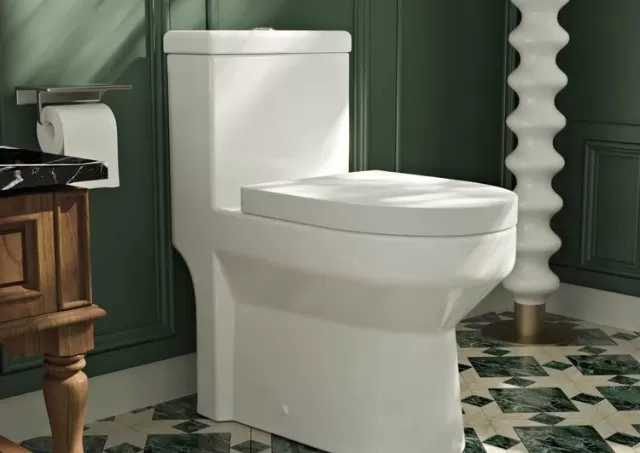Cleaning a toilet is often considered a tedious and unpleasant task that no one enjoys. However, it is essential to maintain a hygienic bathroom.
Since toilets are one of the most frequently used fixtures in a bathroom, regular cleaning is necessary to ensure germ-free surfaces and tackle stubborn stains.
The process of cleaning a toilet begins with removing visible dust, dirt, and grime.
It’s crucial to clean the toilet before applying disinfectant to ensure the disinfectant can effectively eliminate germs on the surface. To make the task of cleaning a toilet more manageable, we have come up with various Tips and Tricks that utilize common household ingredients and minimize direct contact with the toilet itself.
These methods can simplify the cleaning process and eliminate the need for excessive touching. It is recommended to incorporate toilet cleaning and disinfection into your routine at least once a week, adjusting the frequency as needed based on the usage patterns of your household or if someone is sick.
Toilet Cleaning Guide

Cleaning a toilet thoroughly is important to eliminate any bacteria, viruses, mold, and mildew that can accumulate on its surfaces.
Fortunately, this task doesn’t have to be daunting. By following simple steps, you can learn how to clean a toilet effectively and remove stubborn stains.
To clean the exterior of the toilet, begin by using an all-purpose cleaner to spray and wipe down the seat, lid, handle, and entire exterior, including hard-to-reach areas around the base and rim.
Afterward, apply a disinfecting spray or use disinfecting wipes, making sure to leave the surfaces wet for at least 5 minutes (or as per the manufacturer’s instructions) before wiping them clean with a dry cloth.

When it comes to cleaning the toilet bowl, there’s a quick method for when you’re in a hurry.
Simply drop one or two denture tablets into the bowl, and their effervescent action will provide a quick clean within minutes, requiring no brush.
For a mo thorough cleaning, start by emptying the toilet bowl of water.
Then, pour a bucket of water into the bowl and coat the inside with a toilet bowl cleaner. This will flush the toilet without triggering a bowl refill, allowing the cleaner to directly contact the bowl for a deep clean.
Alternatively, you can turn off the water valve near the base of the toilet and flush it to drain the bowl, remembering to switch the valve back on after cleaning. While waiting for the disinfectant to work on other areas of the toilet, let the toilet bowl cleaner sit in the bowl.
Scrub the bowl with a toilet brush and then flush it to complete the cleaning process.

The toilet tank is often overlooked during cleaning, leading to the accumulation of rust, mold, mildew, and grime.
It’s recommended to clean the tank at least twice a year to prevent unpleasant odors and potential damage. To clean the tank, start by emptying it of water by turning off the water valve and flushing until the tank is completely drained.
Then, fill the tank with white distilled vinegar up to the overflow valve and let it sit for 12 hours or overnight before flushing. Use a scrub brush to remove any remaining residue, turn the water valve back on, and flush it multiple times to rinse and refill the tank.
In cases where waiting for 12 hours is not possible, you can combine vinegar with baking soda and Dish Soap for extra cleaning power. After emptying the tank, add two cups of vinegar, one cup of baking soda, and a few squirts of dish soap.
Mix the solution with a brush, scrub the sides and bottom of the tank, let it sit for about 15 minutes, and then turn on the water valve and flush to rinse.

To tackle toilet stains caused by hard water, mildew, or mold, start by emptying the bowl of water.
Add one cup of vinegar to the bowl and let it sit for one minute. Sprinkle baking soda over the stained areas and pour in another two cups of vinegar.
Allow the mixture to fizz and soak for about five minutes, then use a brush to remove any loosened stains. For tougher stains, you can use a pumice stone to gently scrub the inside of the bowl.
Be sure to choose a pumice stone with a handle to maintain distance from the toilet.
To prevent toilet stains from forming in the future, you can use vodka as a cleaning agent.
Simply pour 1/2 cup of vodka into the toilet bowl each month to prevent the formation of rings.
By following these cleaning techniques, you can maintain a hygienic and stain-free toilet.
*The information is for reference only.